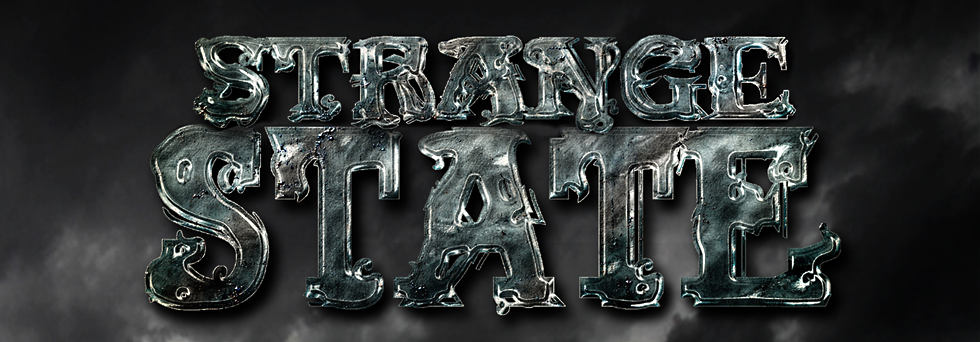Recently I spoke on the now-defunct Ghost Divas Live (??? I may have been there very last guest, at least in the show's original incarnation) about nocturnal phenomena that plague our dreams and the gray world between waking and sleep. I've had some experience in the matter and subsequently did a lot of research on the topic. Here is a brief run-through about the subject.
Many suffer from sleep disorders, ranging from mild insomnia to some fantastic and seemingly impossible phenomena. Among these, none are more incredible than those of Sleep Paralysis and appearances of the Old Hag.
Normal sleep involves REM (Rapid Eye Movement), the state wherein we dream. During this period, the body's gross motor functions are largely immobilized, ostensibly to avoid injuring ourselves should we act out our dreams.
However, in rare instances, an individual's body mightn't enable these security measures, leaving one free to move about during REM sleep. Known as REM Sleep Behavior Disorder, the condition affects 25% of the population (according to some studies) at one point or another throughout their lives. Often times, sufferers aren't even aware of their movements, but a smaller percentage still might notice unexplained wait gain, learning later on that they awake most nights to eat -- in their sleep. Sleep walking has long been a staple of comedic literature and films, but for the sufferer, the truth is doubtlessly unfunny.
At the extremes of this condition are individuals who act out violently, misperceiving their environment and circumstances.
>>> A woman dreamed her house was on fire and tossed her children from and upper story window to "save" them.
>>> A girl in Tennessee killed her family with a gun because the thought they were intruders.
The reasons for these behaviors (despite their severity) aren't clearly known. However, it is believed that stress, narcolepsy, drugs and alcohol might all contribute to episodes of REM Sleep Behavior Disorder. It is recommended that anyone who believes he or she might be suffering from this disorder be tested for narcolepsy.
Non-REM Sleep Behavior Disorder is something of the opposite. Wherein the first disorder the experiencer is free to move about as they sleep, those afflicted with this condition remain immobilized -- even if they are awake. The body's motor functions are still locked down, but the mind might be fully or partially awake. And that's where it gets weird.
In this gray area, on the cusp of waking, an individual may be in what is termed a post-REM hypnopompic state where dreams can "appear" around the individual, as real as any other object in the room. It's frightening enough, especially considering this person feels paralyzed, but when accompanied by another phenomenon the seemingly occurs in concert, the whole experience become horrific.
Many who have experienced this phenomenon report sensing a "presence" in the room with them, a feeling of not being alone. It usually seems unwelcomed or malevolent. Many throughout history have reported a crushing weight upon their chest, making it hard to breath. And reports of a person -- often, but not always, and old hag -- perched atop their bodies are common throughout history. In fact, the word 'nightmare' is contracted from the English word 'night' and the Germanic expression 'mare,' which means a hag, witch, or crone.
In legend, the Old Hag goes back very far. The earliest written records in English seem to date to the 14th century, but it seems the phenomenon is far older. In ancient times, people talked of the Incubus and Succubus, demons that invaded a sleepers bed chamber to molest the dreamers sexually.
Modern researchers theorize the latter was a way for a scientifically ignorant society to explain away erotic dreams, nocturnal emissions, and even rare incidents of Non-REM Sleep Behavior Disorder. Science has also learned that the sense of "presence" that arises likely occurs in a cross-communication error between the left and right hemispheres of the brain. During this state, the brain essentially becomes "aware" of itself and perceives that externally as the presence of a stranger. This likely triggers warning bells and accounts for the feeling of terror or danger than can accompany the occurrence. It seems this all happens because of a lag time (anywhere from seconds to minutes) in communication between the various parts of the central nervous system. As a result, the body isn't "unlocked," the right brain and left brain aren't on the same page, and the experiencer is left with a terrifying event.
All very logical.
However, even among these learned researchers, question linger -- questions they might not want to answer. Why, for instance, is an Old Hag so often seen? It's not exactly the most relevant apparition. With a looming sense of something malevolent having invaded the dreamer's space, why does the mind not manifest something more contemporary, like the image of a burglar, serial killer, or movie monster? Why so often the Old Hag?
On a final note, there are those researchers and scholars who feel that humanity's long history of hags, incubii, fairies, bedside ghosts, and alien visitations are all various iterations of this phenomena, changing with cultures and times.
Whatever the explanations, we should be aware that these phenomena are real. Should you experience them yourself in the future, you'll have a better understanding of what is happening and make a call to your doctor before you call your local paranormal investigation team.


1 comment:
Brilliant post! This has been a subject I have learned a lot about and it began with my own experiences with sleep paralysis and night terrors. In fact, as a ghost hunter, when people tell me something occurs only in the bedroom, I become instantly skeptical about genuine phenomena. I know how very real things can be in moments of transition from wake to sleep and back again.
Post a Comment